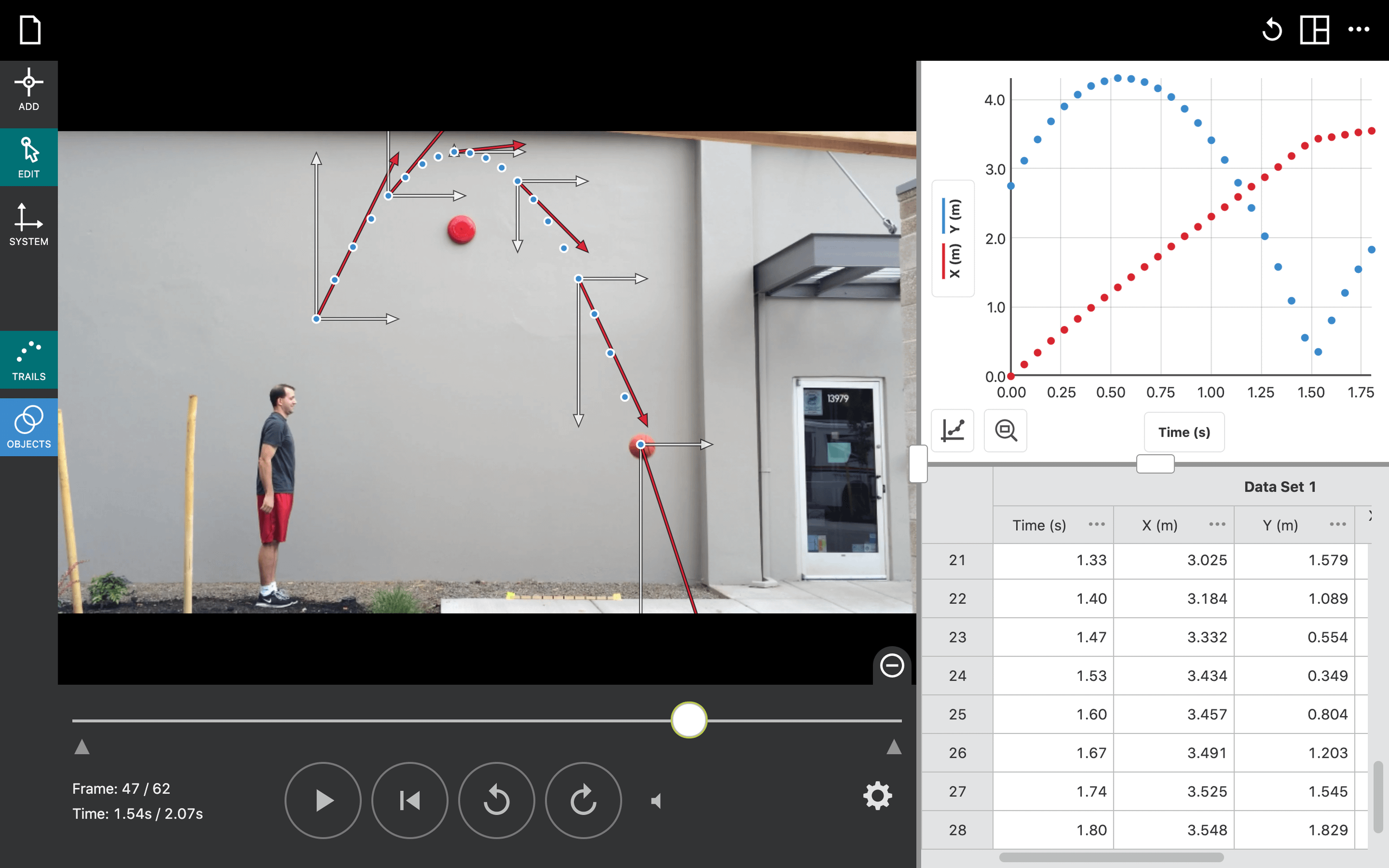Refining the Air Drag Model
Experiment #7 from Vernier Video Analysis: Motion and Sports
- Subject
- Physics

Introduction
When evaluating the forces acting on, and motion of, an object moving through the air, we often simplify the situation by excluding air drag. In many cases, it is appropriate to do so—the object may be shaped so that the drag force is negligible. But, when the object in question is large or moving fast, it is harder to justify excluding air drag.
In this experiment, you will evaluate the effect that mass has on air drag. You will use this data to re-evaluate the validity of the simple air drag force model Fdrag = –bv.
Objectives
In this experiment, you will
- Measure and compare the terminal velocity of six stacks of falling coffee filters of varying mass.
- Evaluate how well the Fdrag = –bv model for air drag force describes the motion of the falling coffee filter as mass changes.
- Refine the air drag model to better fit experimental data.
Sensors and Equipment
This experiment features the following sensors and equipment. Additional equipment may be required.
Correlations
Teaching to an educational standard? This experiment supports the standards below.
- International Baccalaureate (IB)/Sports, Exercise, and Health Science
- 10. Friction and drag
Ready to Experiment?
Ask an Expert
Get answers to your questions about how to teach this experiment with our support team.
- Call toll-free: 888-837-6437
- Chat with Us
- Email support@vernier.com
Purchase the Lab Book
This experiment is #7 of Vernier Video Analysis: Motion and Sports. The experiment in the book includes student instructions as well as instructor information for set up, helpful hints, and sample graphs and data.


